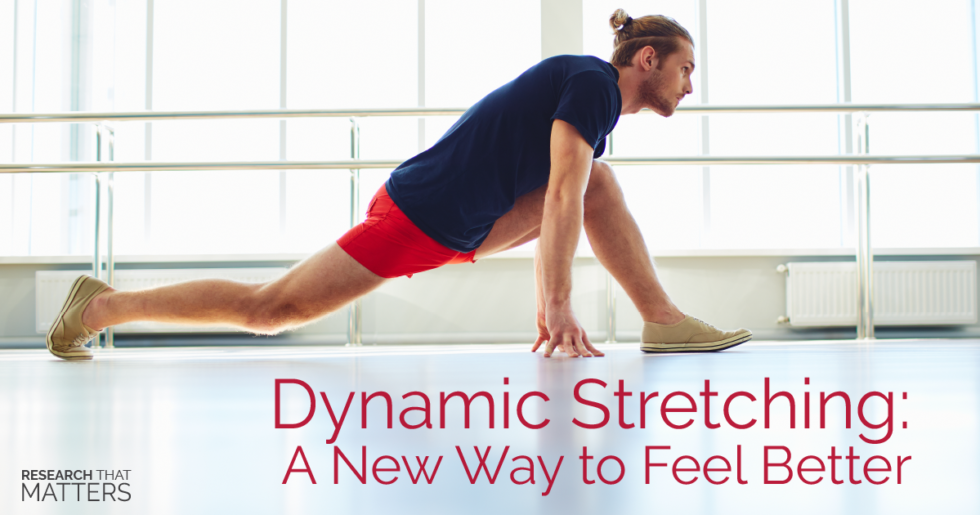
Dynamic Stretching: A New Way to Feel Better
Bottom Line:
You’ve probably been told many times that you should stretch before and after a workout. Most people never do because static stretching is boring and takes so much extra time at the gym. However, there is a way to combine stretching with your workout. It’s called dynamic stretching, and not only is it more fun, but researchers have discovered it’s more effective at reducing injuries and increasing range of motion than static stretching alone.
Why it Matters:
Dynamic stretching doesn’t involve holding a specific position unlike static stretching. It’s about moving your body through ranges of motion that help you prepare for your workout. Dynamic stretching works by increasing your body temperature, blood flow, and circulation. This provides your muscles with more available oxygen and can help enhance your performance. A good warm-up that includes dynamic stretching has been shown to improve both power and agility.
- Dynamic stretching is movement-based and can improve blood flow and circulation.
- Researchers have discovered increased power and agility after dynamic stretching.
- A proper warm-up, including dynamic stretching, can reduce your risk of injury.
Next Steps:
Incorporating dynamic stretching into the beginning and end of your workout is a great way to improve your range of motion and reduce your risk of injuries. If you have questions about incorporating dynamic stretching into your workout, just ask! We love to see our patients enjoy a healthy, active lifestyle.
Science Source:
A Systematic Literature Review of the Relationship Between Stretching and Athletic Injury Prevention. Orthopedic Nursing 2014
Acute effects of muscle stretching on physical performance, range of motion, and injury incidence in healthy active individuals: a systematic review. Applied Physiology, Nutrition, and Metabolism 2016 Dynamic vs Static-Stretching Warm Up: The Effect on Power and Agility Performance. Journal of Strength and Conditioning Research 2006



